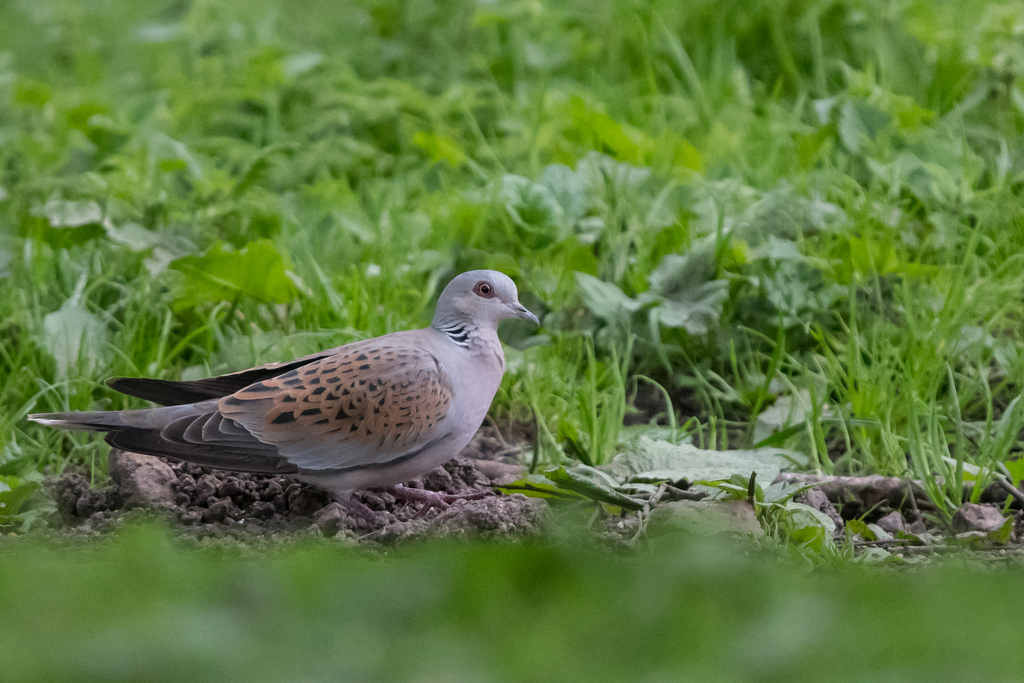
Tim writes: the name has nothing to do with marine reptiles but is onomatopoeic, imitating the bird’s tuneful purring call. The call is the way most birds are located as they often remain hidden among foliage in the tall hedgerows in which they often nest.
They are generally associated with arable farmland as they feed on seeds of arable weeds, particularly Fumitory (Fumaria spp). But this was photographed in the North Yorks Moors where a relict population persists, but where there is very little arable. I think this population feed on “weeds” of bare ground in forestry clearfell where a Fumitory relative called Climbing Corydalis (Ceratocapnos claviculata) occurs in abundance.
The Turtle Dove is Britain’s fastest declining bird, having suffered a 93% decline since 1994. Just as worrying it has suffered a 78% decline across its European range since 1980 which means that it is now vulnerable to global extinction. They are summer migrants that winter in West Africa, which is unusual as all other British pigeons and doves are non-migratory.
[registration_form]
The last turtle doves I have seen were on the southern edge of the north yorks moors, one the same lane for two successive years.